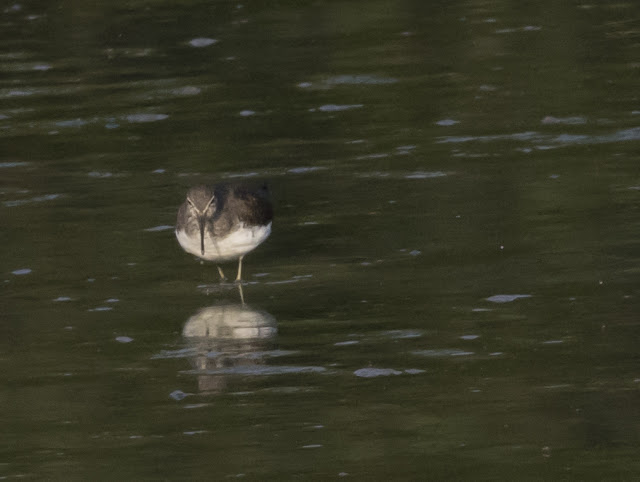I disturbed half a dozen small finches from the salt marsh by Uplees Copse, and they ended up in the top of one of the trees in the copse. The one pictured turned out to be a male Linnet, Linaria cannabina.
There was a Grey Heron standing on the edge of the muddy shore:
As we walked along, individual Common Redshank, Tringa totanus, were regularly startled from their feeding points along the mud, and here is a nice view of one in flight, showing the barred tail. You can just see part of the white back stripe.
There were lots of Black-headed Gulls, feeding on the mud and flying around. By now the light was so poor that the ISO was preventing much cropping in the photography.
There were some Herring Gulls along the shore, as well as over-flying. This one appears to have a dark tip to its tail, and a blackish gonys spot on its beak, with no brown obvious on its wing, but a good yellow iris to its eye, so just possibly a fourth winter bird.
Lesser Black-backed Gull I think,
Greater Black-backed Gull on the channel marker,
Curlews in flight over The Swale
The first of two female Marsh Harriers flew over The Swale, possibly to roost on Sheppey.
On the far side of The Swale there was a very large raft of Teal and Wigeon apparently resting quietly, probably well over a thousand birds in total. This is a small part of the raft
There were Shelduck scattered around the Swale, sometimes feeding, sometimes flying. Here is one flying in front of the raft of duck in the background
On the way back, we came across a group of about a dozen Black-tailed Godwits, exploring the mud. They are often a bit later getting out on to the estuary than some of the other waders, after roosting at high tide.
Walking back towards the copse, a single Turnstone was very busy, examining a clump of seaweed and stones:
Got a little crustacean, or something else?












































